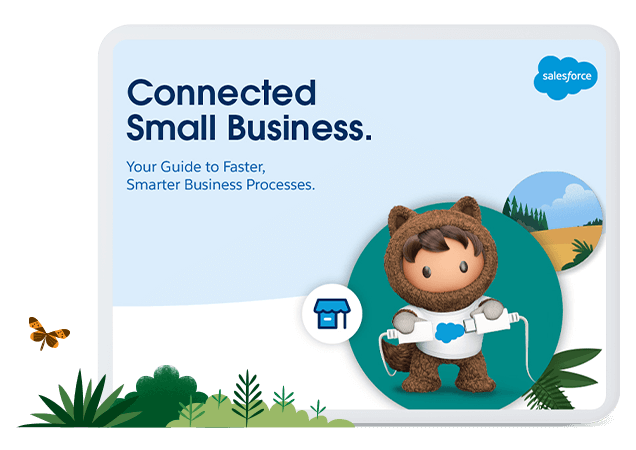Businesses are operating in a new world where decentralised workforces are increasingly common, customer expectations for personalised service have never been higher, and the gap between data-driven organisations and those still operating in an analogue world is widening. The digital gap is threatening to become a chasm.
To remain competitive in the current climate, today’s small business needs to have a holistic view of its customer. It needs to make intelligent, data-backed decisions and equip and empower a remote workforce in an unpredictable climate. And it needs to be able to shift to new business models if required quickly.
In other words, today’s small business needs to centralise its data management. Let’s look at why centralised data management is important, and then deep dive into SMEs can unite their data and create a North Star of information.
What are the benefits of centralised data management?
Data is one of a business’s most valuable assets. A centralised data management system enables SMEs to better control and leverage that asset. Here are just some of the advantages that a centralised data management system can offer SMEs.
Better business intelligence. The future is difficult to predict, and operating without analytics is like driving without a map. Research shows that 82% of data-driven organisations say they had a crucial advantage during the pandemic. And 79% say that they ensure that their decision making is backed by their data. But businesses that don’t have centralised data management – or a Single Source of Truth (SSOT) – may find themselves working with incomplete data. Or even worse, with rogue data that’s stuck in siloes.
Improved data integrity. To get full value from its data, an SME needs to be able to trust the reliability of the data. According to a KPMG report, 25% of executives reported that they had limited trust or active mistrust in their data. And only 35% say that they have a high level of trust in their company’s analytics, as many companies are still working with data that’s been siloed. But by centralising data management, businesses can build trust by ensuring that everyone has access to the same data at the same time. This SSOT can be the North Star that guides operational decisions.
Increased productivity. A centralised data management platform is crucial for driving operational efficiency and productivity. When departments or functions are forced to work with disparate data sources, untrustworthy or untimely data, or fragmented data, they’re not operating with all the information they need to succeed. This not only leads to productivity gaps and sub-optimal service; it affects employee satisfaction.
World-class collaboration. Workers are increasingly asked to work across functions in the new climate. And departments are becoming more and more focused on creating agility and building better connections. But businesses that are still operating in silos will struggle to make these connections count. A centralised data platform provides an SSOT that enables collaboration, reduces bottlenecks and allows team members to share data in real-time, from wherever they may be.
Increased enterprise value. A study on data literacy reveals that companies with high data literacy benefit from increased corporate performance. The same report also highlights data decentralisation as a core pillar of data literacy. On a smaller scale, centralised data management can help cut IT costs, replace obsolete data stores and streamline data architecture.
Five data management tips for getting the most out of your data
Since data is one of a small business’s most valuable resources, manage it in a way that allows it to best support an organisation’s business objectives. Here are a few data management tips to help you create a successful strategy.
Map out your entire data landscape. Before you centralise your data, make sure that all your business’s data points are accounted for. This includes cloud-based and physical data stores, shared drives and spreadsheets, legacy systems, apps, email servers, databases, etc. You want to ensure that all your SME’s data is unified and that there aren’t any off-the-grid data sets in siloes.
Get data governance right. When it comes to centralised data management, there are a few things you’ll have to balance. You’ll want to ensure robust data governance so that your data is well regulated and not vulnerable to external cyber threats. You’ll also want to ensure that workers don’t have access to data they shouldn’t. But you’ll also need to make sure that your data is flexible and not too ‘locked down’, as it needs to fuel your sales and service teams. Finding the right balance between conservative data stewardship and aggressive leverage is key.
Get the team on side. We mentioned earlier that there are some inherent trust issues surrounding data in many companies. Considering how many departments have worked with fragmented data landscapes, this isn’t surprising. When centralising data, these old habits may die hard. But the insights that data can provide won’t do much good if the team doesn’t pay attention to them. Building trust is key, so make sure that all the stakeholders understand how having an SSOT can empower them.
Aim your data management process at a business goal. When centralising your SME’s data and approaching data governance, you’ll want to consider your ultimate business goal. Do you want to drive sales by surfacing better leads? Do you want to use data to create great consumer experiences? Do you want to enable your marketing department to become more customer-centric? Or perhaps you just want to use data to help determine new business strategies. Or introduce CRM systems to create better relationships with your customers. Whatever your specific business goal is, it can help guide your data management strategy.
Turn your data into actionable information. Monetising your business’s data doesn’t have to mean selling it to third-party vendors. There are much more valuable and customer-centric ways to leverage your data. Use your SME’s data to identify gaps in the market and create new products and services. It can be useful in figuring out how to tweak products to make them better. It can segment customer groups and then address their unique needs. You may find surprising ways to get value from your customer data, as you turn raw data into actionable insights.
Unite your data, unite your workplace
Imagine trying to divine what an entire jigsaw puzzle looks like by holding just a single piece of the puzzle: it’s nearly impossible. Today’s workers need to see the whole picture. And today’s small businesses need to be operating from a place of knowledge. Data transformation is business transformation. It’s a doorway into a world of deeper insights, better collaboration and more efficient processes. And data transformation starts by breaking silos and unifying information. Data transformation can carry SMEs to new frontiers, and better data management starts here.
Find out more with out free e-book "Connected Small Business".







